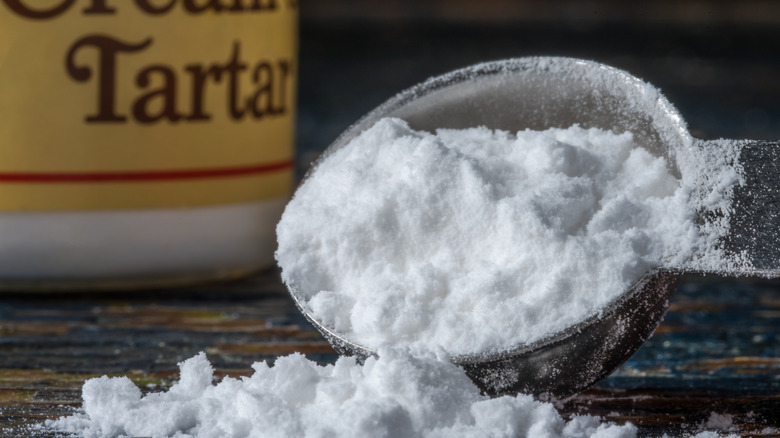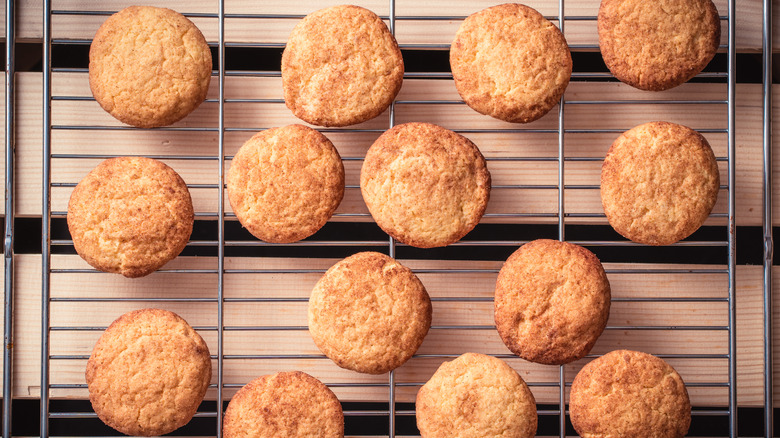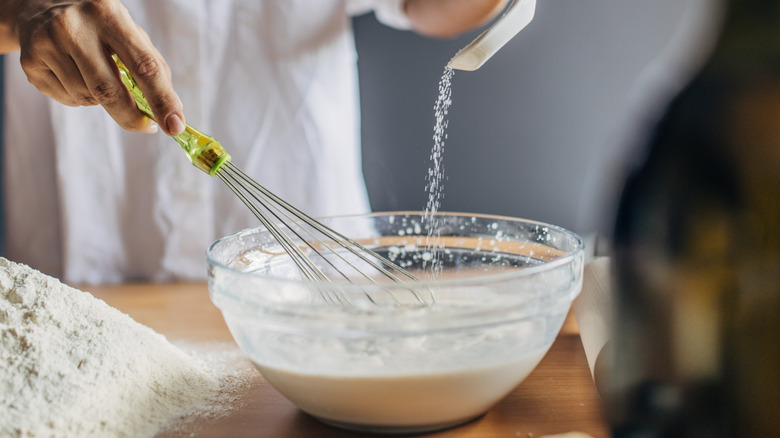The Cream Of Tartar Substitutes You Already Have In Your Kitchen
If you're an avid baker, more than likely you've used recipes with cream of tartar as an ingredient. Also known as potassium acid tartrate or potassium bitartrate, cream of tartar is used to stabilize egg whites, which helps the meringue on your homemade lemon meringue pie to keep its shape. It also gives chewiness to cookies by keeping sugars from crystallizing. Baking powder often contains cream of tartar because it kickstarts leaveners.
Although cream of tartar features in many baking recipes, it's not as well known as other common baking staples, such as flour, sugar, and baking soda. As a result, you might get halfway through a recipe only to discover you don't have this key ingredient in your pantry.
Luckily, there are several simple replacements for cream of tartar that you likely already have in your kitchen, including lemon juice, vinegar, and corn syrup. If you have to reach for a substitute, however, you should know how — and when — to successfully make the swap, and what the results might be if you don't use anything.
How to substitute out cream of tartar in your baking
One of the most common reasons people add cream of tartar to their baking is to help stabilize whipped egg whites. If your recipe includes a meringue, cream of tartar will keep peaks stiff and halt weeping. If you don't have cream of tartar, you can use lemon juice as a substitute. No lemon juice? Use white vinegar, which, like lemon juice is acidic, for a similar effect. We recommend replacing the cream of tartar with twice as much lemon juice or white vinegar. For instance, if the recipe calls for ½ teaspoon of cream of tartar, use 1 teaspoon of juice or vinegar.
Cream of tartar can also be a great way to stop sugar from crystallizing when making some types of candies, such as caramel. If this is why the recipe calls for the ingredient, you can substitute corn syrup instead. If you have to skip the cream of tartar and go this route, cut back on the amount of sugar in the recipe since corn syrup is so sweet. The fat in butter also impedes the crystallization of sugar, but getting the replacement ratios can be tricky.
Cream of tartar will activate baking soda's leavening properties, which makes your baked goods rise and get all soft and fluffy. If you have a recipe that includes it along with baking soda, you can substitute baking powder. Whereas baking soda is straight sodium bicarbonate, baking powder is baking soda mixed with cream of tartar, making this one an easy swap.
Use it or lose it?
Although these substitutes are ingredients most home bakers usually have on hand, that's not to say that everyone will always have them available. So, what happens if you can't make these substitutions and need to leave out the cream of tartar entirely? Before omitting cream of tartar completely from a recipe, think about why it's called for, and what the outcome could be if you don't add it.
Cream of tartar plays different roles in different recipes, so leaving it out will have various effects, depending on how you're using it. For instance, if your recipe includes cream of tartar to help create the perfect meringue, you can still whip your egg whites without it. However, skipping it could increase the chances of the meringue becoming watery and flat. Similarly, not adding cream of tartar to certain cookie and candy recipes removes an added safeguard against sugar crystallization, increasing the likelihood of crispy cookies or caramel that isn't smooth and creamy. In other cases, not using cream of tartar in your baking can change the texture or the taste of the final product.
The good news is that you now know several easy substitutions to try if you forget to add cream of tartar to your next grocery order.


